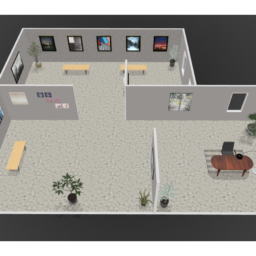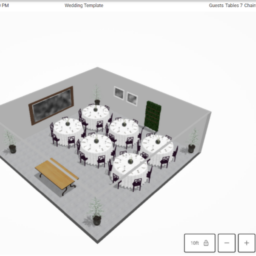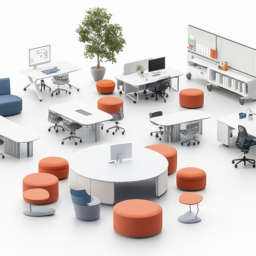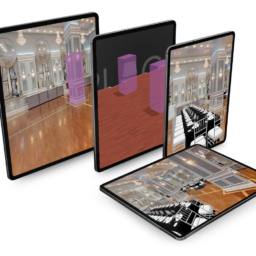Introduction
Imagine hosting an event where every guest feels valued, comfortable, and included. This can be achieved by thoughtfully designing event spaces for accessibility and inclusivity. Whether you are an event planner or a venue owner, creating an environment where everyone can participate fully should be a top priority. This blog post will guide you through practical steps and considerations to ensure your event spaces are welcoming to all. From understanding the importance of accessible design to implementing tangible changes, prepare to make your events more inclusive and prosperous.
Why Accessibility and Inclusivity Matter in Event Design
Enhancing Guest Experience
Creating an accessible and inclusive event space significantly enhances the experience for all attendees. When guests feel included, they are more likely to engage, enjoy, and share positive feedback about your event. Think about it—no one wants to feel left out because of a preventable barrier.
Legal and Ethical Responsibilities
Event planners and venue owners are legally obligated to comply with accessibility standards, such as the Americans with Disabilities Act (ADA). Beyond legal compliance, promoting inclusivity is ethically correct. It’s a step toward a more equitable society with equal participation opportunities.
Broadening Your Audience
By designing for accessibility, you open your event to a broader audience. This increases attendance and enhances your reputation as a considerate and forward-thinking organizer. More attendees mean more networking possibilities, sales opportunities, and overall success for your events.
Understanding Different Types of Disabilities
Physical Disabilities
These include mobility impairments requiring wheelchairs, walkers, or other aids. Ensure your venue has ramps, elevators, and wide doorways to accommodate these needs.
Sensory Disabilities
Sensory disabilities encompass visual and hearing impairments. Consider providing services such as sign language interpreters, braille programs, and high-contrast signage to cater to these attendees.
Cognitive Disabilities
Cognitive disabilities affect learning, memory, and concentration. Simplifying navigation and providing clear, concise information can make your event more accessible for individuals with cognitive challenges.
Conducting an Accessibility Audit
Evaluating Venue Layout
Conduct a thorough assessment of your venue’s layout. Identify any physical barriers that impede access and consider ways to remove or mitigate them. This might involve rearranging furniture or adding temporary ramps.
Assessing Communication Tools
Review your communication tools, such as websites, printed materials, and on-site signage. Ensure they are accessible to everyone, including those with visual or hearing impairments. Use large fonts, simple language, and visual aids.
Seeking Feedback from Disabled Individuals
One of the best ways to understand accessibility needs is to ask those who experience them. Seek feedback from individuals with disabilities to gain insights into potential improvements and validate your plans.
Training Staff for Inclusivity
Sensitivity Training
Provide sensitivity training for your staff to make them aware of the various needs of disabled attendees. This training should include understanding appropriate language, offering assistance respectfully, and being aware of specific needs.
Emergency Preparedness
Ensure your staff is trained to handle emergencies, keeping the needs of disabled guests in mind. This includes knowing accessible evacuation routes and having a clear plan to assist those who need help.
Customer Service Excellence
Train your staff to provide exceptional customer service to all attendees. They should be approachable, knowledgeable, and ready to assist anyone who requires additional support.
Implementing Accessible Design Features
Physical Accessibility
Ensure ramps, elevators, and wide doorways are available and functioning. Additionally, provide accessible seating options and ensure that stages or speaking platforms are reachable.
Sensory Aids
Incorporate sensory aids such as braille signage, hearing loops, and tactile maps. These tools can significantly enhance the experience for attendees with sensory disabilities.
Technological Solutions
Leverage technology to improve accessibility. For example, use apps that offer real-time captioning for presentations or virtual venue tours for remote attendees.
Enhancing Event Communication
Clear Signage
Use clear, easily readable signage throughout your venue. Ensure signs are placed at accessible heights and locations, providing directions and essential information.
Accessible Marketing Materials
Make your marketing materials accessible to everyone. Use plain language, high-contrast colors, and alternative text for images. Ensure your website is compliant with accessibility standards.
Multilingual Support
Consider providing multilingual support for your event. This can include translating materials and offering interpretation services to cater to non-native speakers and those with limited language proficiency.
Creating Inclusive Activities
Diverse Programming
Offer a range of activities that cater to different interests and abilities. This ensures that everyone can find something enjoyable and enriching to participate in.
Interactive Elements
Incorporate interactive elements that encourage participation from all attendees. This could include hands-on workshops, Q&A sessions, and networking opportunities.
Flexibility and Adaptability
Be flexible and ready to adapt your activities based on attendee needs. Allow for modifications and provide alternatives to ensure everyone can participate fully.
Promoting an Inclusive Environment
Encouraging Interaction
Create opportunities for interaction among attendees. This can include ice-breaker activities, discussion groups, and social events designed to foster connections.
Celebrating Diversity
Celebrate the diversity of your attendees by highlighting different cultures, perspectives, and experiences. This can be done through presentations, performances, and displays.
Building a Community
Foster a sense of community among your attendees. Encourage networking, collaboration, and ongoing engagement beyond the event itself.
Monitoring and Evaluating Success
Gathering Feedback
Collect feedback from attendees to understand what worked well and where improvements are needed. Use surveys, suggestion boxes, and direct conversations to gather insights.
Analyzing Data
Analyze the feedback and data collected to identify trends and areas for improvement. Look for patterns that indicate common issues or successful strategies.
Continuous Improvement
Use the insights gained from your analysis to improve your event planning and design continuously. Strive to make each event more accessible and inclusive than the last.
Leveraging Technology for Accessibility
Virtual Events
Consider offering virtual attendance options for those who cannot attend in person. This can include live streaming, virtual tours, and online networking opportunities.
Assistive Devices
Provide assistive devices such as hearing aids, mobility aids, and adaptive technology to support attendees with disabilities.
Innovative Solutions
Stay informed about the latest technological advancements in accessibility. Implement innovative solutions that enhance the event experience for all attendees.
Building Partnerships for Inclusivity
Collaborating with Experts
Partner with accessibility experts and organizations to ensure your event design meets the highest standards of inclusivity.
Engaging the Community
Engage with the local community to understand their accessibility needs and preferences. This can help you tailor your event design to better serve your audience.
Supporting Advocacy
Support advocacy efforts that promote accessibility and inclusivity. This can include sponsoring events, participating in awareness campaigns, and sharing resources.
Conclusion
Designing event spaces for accessibility and inclusivity is not just a trend; it’s a necessity. By making thoughtful, informed decisions, you can create environments where everyone feels welcome and valued. Remember, the goal is not just to meet minimum standards but to exceed expectations and set new benchmarks for inclusivity. Start your journey today by implementing these strategies and watch your events become more successful and impactful. For personalized guidance, consider reaching out to accessibility consultants who can help you refine your approach and achieve your inclusivity goals.















